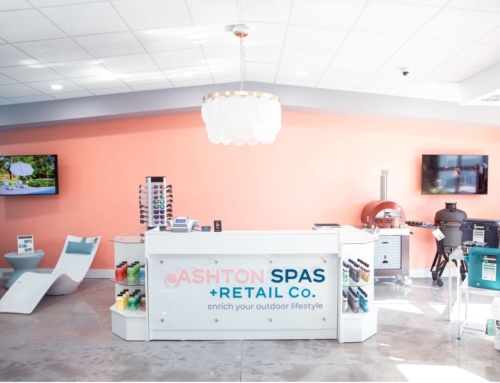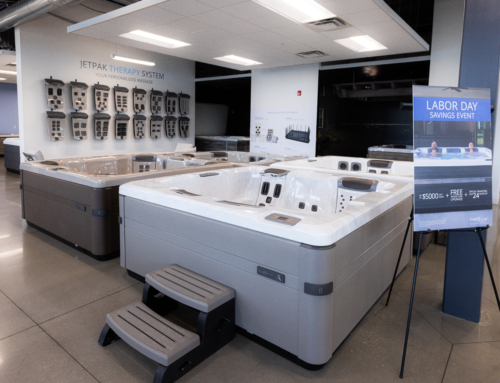In-house consumer financing is one of the most common ways for small, independent spa retailers to boost hot tub sales. As with any big-ticket purchase, the average consumer rarely has enough disposable income to pay in full. For these customers, the option to finance makes these purchases more affordable. The advantages of consumer financing are well known, but what does it take to launch a successful program? Here are 11 steps to take before and after you introduce consumer financing into your business to ensure the best results.
1. Determine Goals
Before implementing your consumer financing program, you want to establish clear goals for your initiative. One objective is evident: increase spa sales. Other aims, however, require more insight. You need to weigh the advantages of increased cash flow and higher sales with the costs of inventory and financing. When considering consumer financing, ask yourself the following:
- How much will financing cost the business?
- Is this something that would benefit the customer?
- How will this improve sales?
- How does consumer financing play into the growth strategy?
The answers to these questions necessitate a thoughtful business plan and a clear understanding of your customers’ spending habits. In determining your goals, you can choose a more suitable financing solution and partner for your business.
2. Find Right Financing Partner
The next step is to find a financing partner who, first, has experience in pool and spa retail (or similar industry) and, second, can offer solutions favorable for both your business and your target consumer.
Since both ends of the supply chain have incentive to move hot tubs, a dealer-manufacturer financing partnership can be most beneficial.
As with any potential financial partner, you need to research the company. How long have they been in business? What terms are available? What can they offer that their competitors can’t? Generally, local lenders are preferable for small retailers because they have a good sense of your consumer base and the reach of your business.
While working with a financing company, you can also opt to enter a dealer-manufacturer agreement. This allows the retailer to offer additional financing benefits to their customers, such as no-payment or interest-free introductory periods, through discounts from the manufacturer. Since both ends of the supply chain have incentive to move hot tubs, this partnership is beneficial.
3. Choose Right Financing Product
Once you’ve settled with a financing partner, you will likely be given a set of program offerings to choose from. In principle, most of these solutions function the same way. However, there are discrepancies that affect flexibility, such as who can qualify and spending requirements.
First, you need a consumer financing product that matches your spending requirements. For instance, a product that finances purchases of $10,000 or more would not be suitable for most spa retailers who often sell products in the $6,000-$9,000. Ideally, you want a lender who can offer financing that covers most of your showroom items.
Second, your financing product should have added incentives for consumers, such as no APR for the first six months or no money down. These offers are helpful in both promoting and selling your financing plans. Generally, lenders offer some sort of consumer benefit because they have a stake in the success of the program as well.
4. Identify Financing Customer
According to the Harvard Business Review, “Your most important customers are not those that generate the most revenue but those that can unlock the most value in your business.” In terms of consumer financing, you don’t want your offer to simply drive sales; instead, it should help retain and entice your target customers. In other words, it’s not what you sell, but who you sell to.
You can shape your consumer financing program to target through a variety of means. First of all, you can introduce a plan that limits who can qualify for a loan. For instance, most plans don’t approve subprime borrowers. Obviously, this reduces the chances of a bad loan and collection costs. However, it also targets better consumers who are more likely to shop again.
If low price advertising is not the image you wish to convey for your store, then no-credit financing can mar your branding image.
On the flip side of the coin, you can also implement a plan with no-credit or low-credit approvals, but often these are more expensive for both you and the consumer. Furthermore, if low price advertising is not the image you wish to convey for your store, then no-credit financing can mar your branding image. Before offering any financing plan, be sure to know your target consumers and tailor the product toward them.
5. Align Message with Business Narrative
Your business narrative is the strategic vision for your company. It includes your image, your market, your goals, your beliefs–in short, your business ethos. It serves as the guiding principle that informs the business decisions you make, including offering consumer financing.
As mentioned before, your financing options should align with the direction of your showroom. Does your financing plan undermine the shopping experience you want your customers to have? Does it bring in the wrong kind of consumer? To find answers to these questions, you need to have thorough understanding of your business and vision for its future.
6. Display In-Store Signage
Once you’ve integrated consumer financing into your showroom, it’s time to get the word out. First and foremost, you need in-store signage. Set up displays in high-traffic areas, points of sale, and near large-ticket items to alert customers. Include any special offers and benefits, such as fast approvals or low interest payments.
You should also display financing information on product price tags, outlining the details for the specific product. For instance, provide the estimated monthly cost for that particular item or list the term availability. This will help customers weigh the benefits of financing, which usually leads to an increase in spending.
7. Develop Special Promotion
To encourage consumers to enroll in your financing program, you should offer promotional incentives with your plan. As mentioned before, many lenders have promotional opportunities built into the product. Common promotions include:
- No money down
- 0% interest for 6-12 months
- Low introductory rates
- No payments for 12 months
While you don’t have to include special offers in your financing plans, they certainly increase consumer participation and draw attention to your payment options.
8. Advertise Offer
New consumer financing offers make for excellent advertising. Not only does it capture the attention of your current customers, but of a wider, new consumer base as well. Be sure to promote the same in-store incentives and highlight the affordability of your larger ticket items. Invest in some ad space, whether it’s TV, radio, online or in print, to get the word out.
9. Train Sales Staff
Training your sales team is an important step in promoting your consumer finance program. You want to be sure that they know how to bring up the idea of financing with the customer. For example, using the phrase “payment option” sounds better than “financing.” Once the idea is on the table, your sales rep should also be fully versed in the details of the plan.
The better your employees understand and reinforce the financing options, the more convenient the process becomes.
The better your employees understand and reinforce the financing options, the more convenient the process becomes. With a fast, easy application and approval process, customers are more likely to make impulse purchases, such as upgrading to the high-end spa model.
10. Practice Sales Process
Sustaining a successful consumer financing option means knowing how to sell it. To keep the sales team up to date, Nick Kasten of Arizona Hot Tub Company suggests weekly sales meetings “to make sure everyone is up to speed on the latest financing offer and how to present it.” Using staff meetings and training sessions, you can reinforce the importance of payment options and ensure salesperson on the showroom floor knows how to market them.
11. Monitor Metrics
As with every aspect of your spa business, you need to pay close attention to the performance of your financing plan. In targeting a few specific metrics, you can see where you saw the most and least improvement. In particular, pay attention to the following:
- Number of sales
- Average purchase amount
- Number of customers enrolled in a payment option
- Changes in gross revenue
- Changes in expenditures
- Lender fees
In knowing this information, you can alter how you present your consumer financing options or increase marketing efforts. Finally, you can determine if your plan or financing partner is a good fit for your business.
In deciding whether consumer financing is right for your business, always consider the costs. Lender fees, especially in a relatively niche industry like hot tubs, can be higher than most dealer financing options. For most modest retailers, financing options are a great sales driver, whereas for others, just another expensive hurdle to overcome.









Leave A Comment